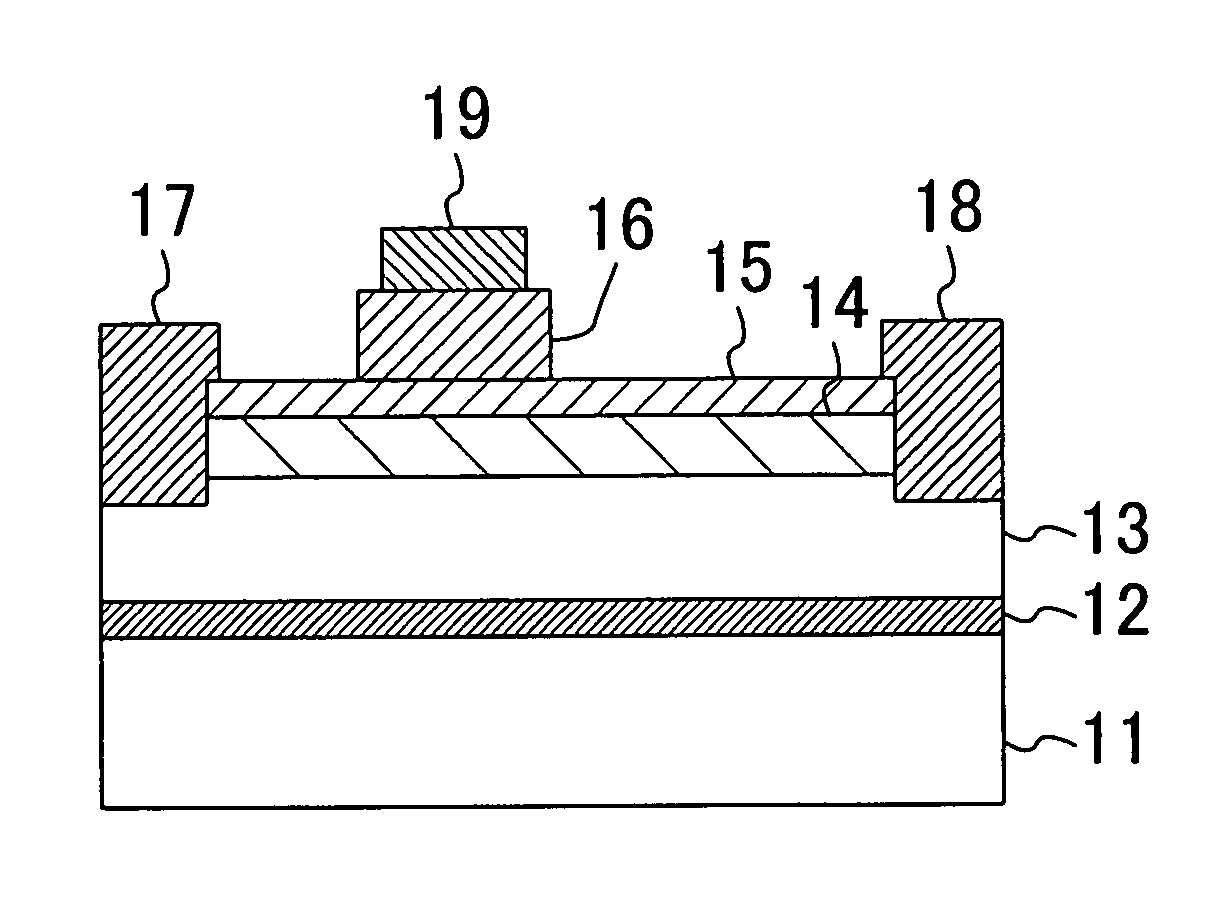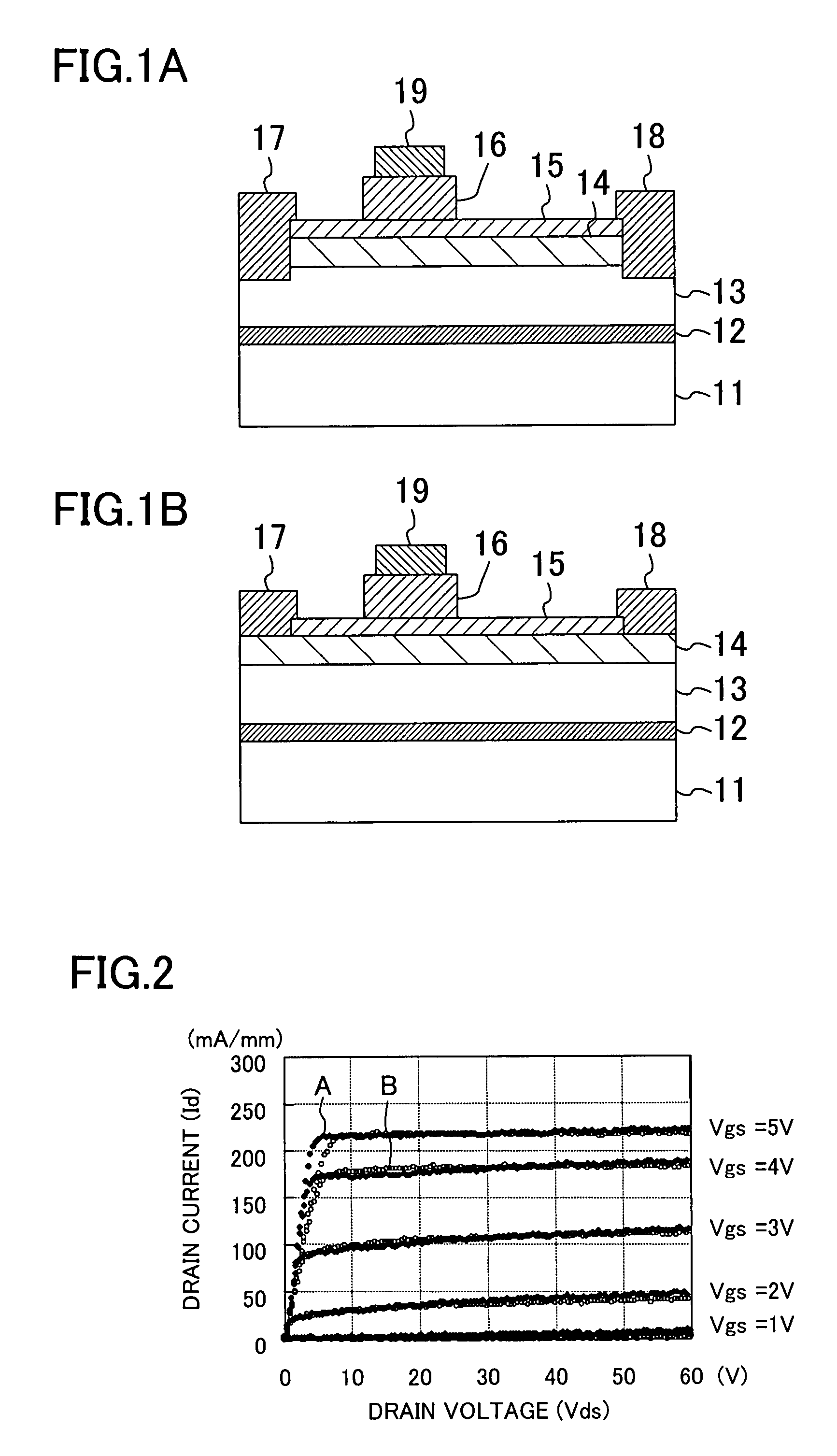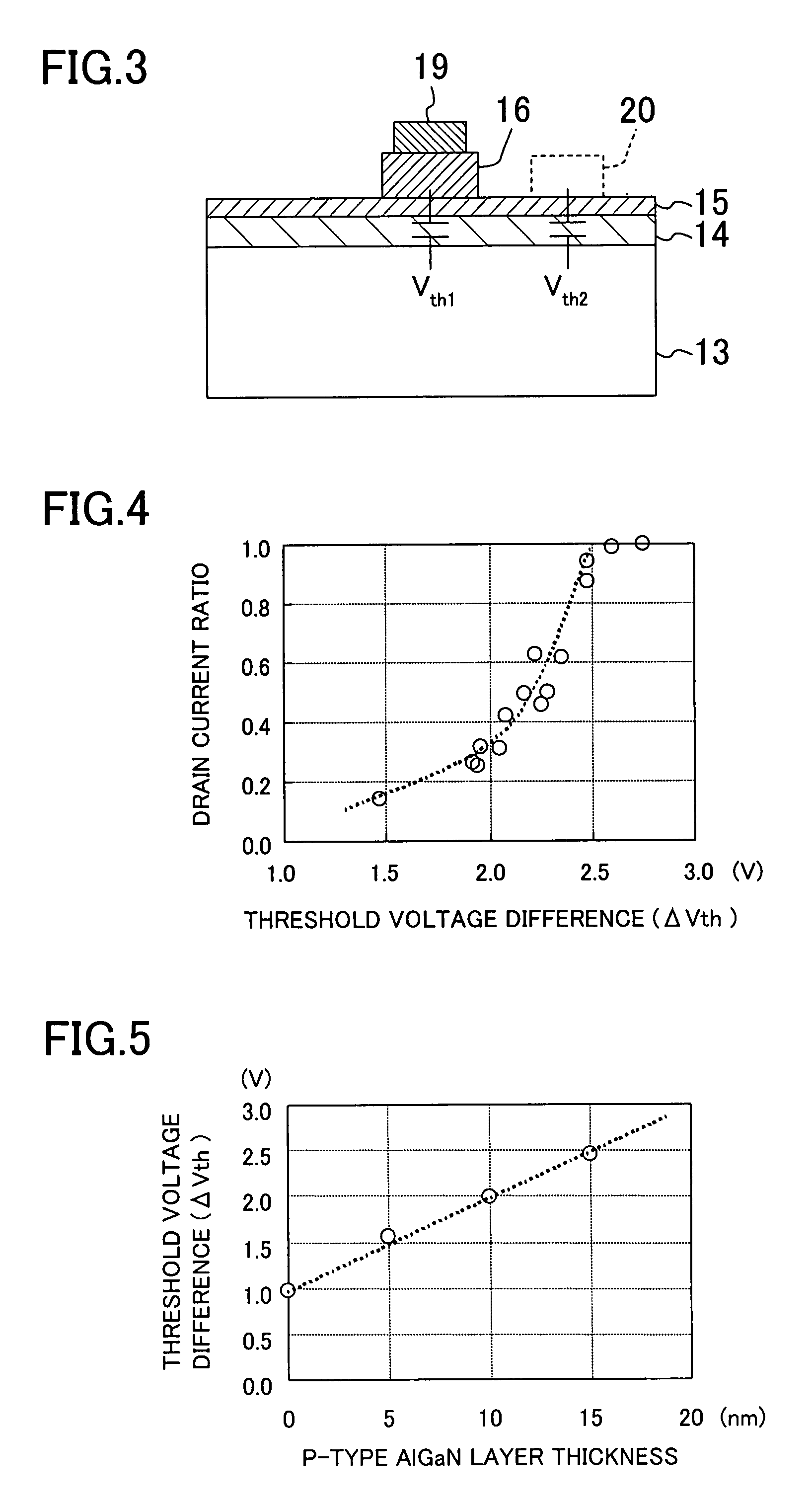Nitride semiconductor device and method for fabricating the same
a semiconductor and semiconductor technology, applied in the field of nitride semiconductor devices, can solve the problems of difficult for the fet to exhibit enhancement-type (normally off-type) characteristics, and achieve the effect of preventing current collapse, small on-resistance and preventing current collaps
- Summary
- Abstract
- Description
- Claims
- Application Information
AI Technical Summary
Benefits of technology
Problems solved by technology
Method used
Image
Examples
first embodiment
[0050]A first embodiment of the present invention will be described with reference to the accompanying drawings.
[0051]FIG. 1A shows a cross-sectional structure of a nitride semiconductor device (JFET) according to the first embodiment of the present invention. Referring to FIG. 1A, the nitride semiconductor device according to the first embodiment has a substrate 11, a buffer layer 12, a channel layer 13, a barrier layer 14, a p-type AlGaN layer 15, and a p-type GaN layer 16. The substrate 11 is made of sapphire and the orientation of the principal plane thereof is the (0001) plane. The buffer layer 12 of aluminum nitride (AlN) is formed on the principal plane of the substrate 11 and has a thickness of 100 nm. The channel layer 13 of undoped gallium nitride (GaN) is provided on the buffer layer 12 and has a thickness of 2 μm. The barrier layer 14 of undoped aluminum gallium nitride (AlGaN) is formed on the channel layer 13 and has a thickness of 25 nm. The p-type AlGaN layer 15 as a...
second modification
of First Embodiment
[0081]In the first embodiment, as shown in FIG. 1, in the p-type AlGaN layer 15 provided on the barrier layer 14, the thickness below the gate electrode 19 and the thickness below the side of the gate electrode 19 are substantially identical.
[0082]However, as in the case of a second modification shown in FIG. 7, in the p-type AlGaN layer 15, the thickness below the side of the gate electrode 19 may be made smaller than the thickness below the gate electrode 19 so that the thickness below the gate electrode 19 is set at about 20 nm and the thickness below the side of the gate electrode 19 is set at about 15 nm.
[0083]With this structure, the nitride semiconductor device according to the second modification can prevent the current collapse like the first embodiment. In addition to this, a corner provided at the side of the gate electrode 19 and having a maximum electric field intensity in applying a high drain voltage is formed only of the p-type AlGaN layer 15 with ...
third modification
of First Embodiment
[0084]Not only the nitride semiconductor device has the structure in which the p-type GaN layer 16 is formed only below the gate electrode 19, but also it may have a structure in which, like a nitride semiconductor device according to the third modification shown in FIG. 8, part of the p-type GaN layer 16 is also formed below the side of the gate electrode 19. In this structure, if an exposed portion of the p-type GaN layer 16 formed below the side of the gate electrode 19 is thick, it will cause an increase in a leakage current flowing between the gate and the drain or between the gate and the source. Thus, the exposed portion desirably has a thickness of about 20 nm or less. This makes it possible to widen the above-described threshold voltage difference ΔVth, whereby the current collapse can be prevented.
PUM
 Login to View More
Login to View More Abstract
Description
Claims
Application Information
 Login to View More
Login to View More - R&D
- Intellectual Property
- Life Sciences
- Materials
- Tech Scout
- Unparalleled Data Quality
- Higher Quality Content
- 60% Fewer Hallucinations
Browse by: Latest US Patents, China's latest patents, Technical Efficacy Thesaurus, Application Domain, Technology Topic, Popular Technical Reports.
© 2025 PatSnap. All rights reserved.Legal|Privacy policy|Modern Slavery Act Transparency Statement|Sitemap|About US| Contact US: help@patsnap.com



